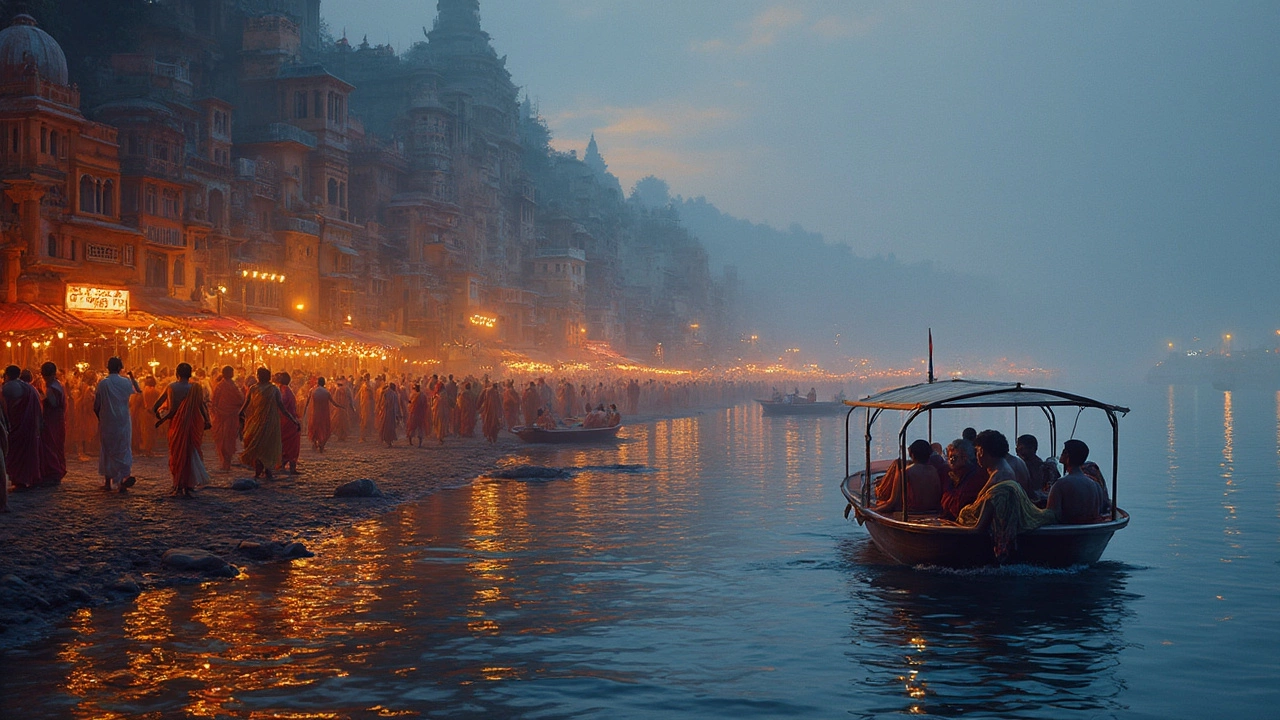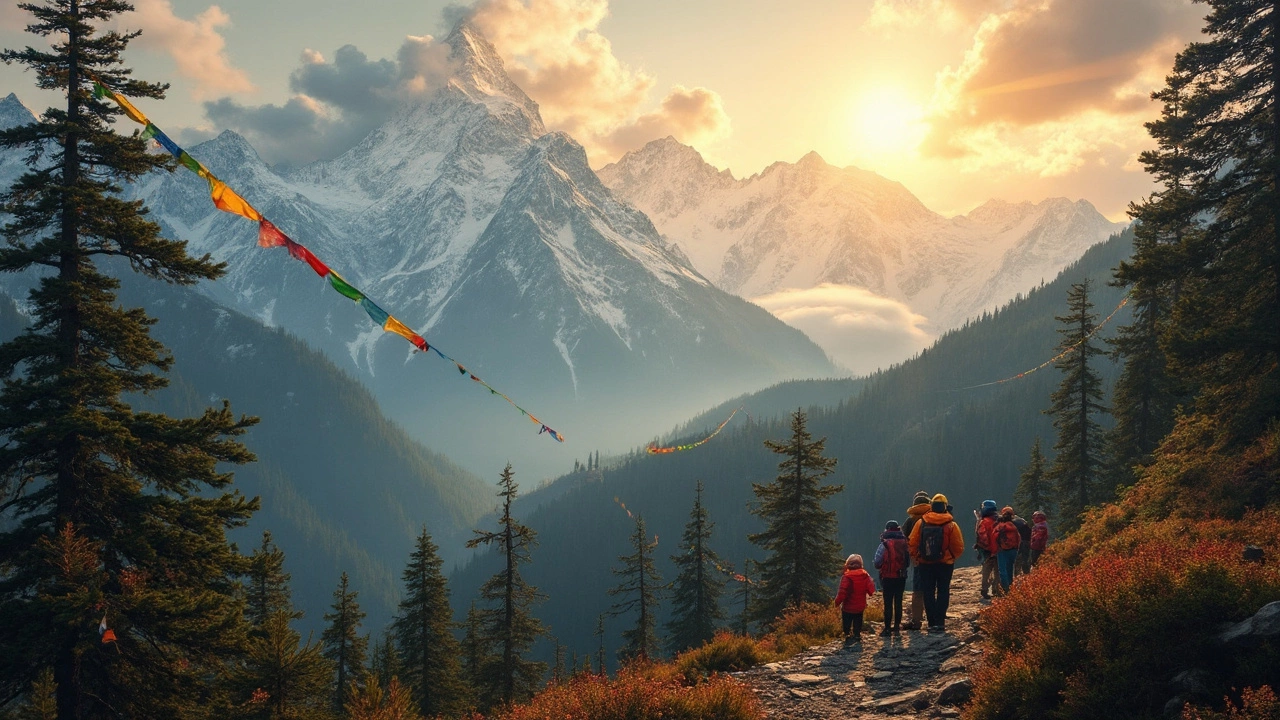You'd think picking the most beautiful place in India would be easy, but in North India, it's almost impossible to settle for just one. Between the snow-covered Himalayas, vibrant valleys, and ancient forts, there’s always something that outshines the rest—at least for a while. And if you look at how many people keep going back again and again, you know it’s not just travel hype.
Let’s get straight to what matters: making your trip worthwhile. Not every postcard-perfect spot actually feels special when you visit, and not every local favorite is all over Instagram. North India is loaded with both—the famous and the secret. Figuring out which one deserves your time (and your camera storage) is what we’re here for.
From practical planning tips to why the climate can make or break your trip, you’ll find honest advice and unexpected facts here. So, if your travel bucket list includes jaw-dropping views, easy hacks for moving around, and a taste of both nature and culture, you’re in the right place.
- Why North India Dominates the List
- The Big Debate: Kashmir vs. Himachal vs. Uttarakhand
- Hidden Gems No One Talks About
- Tips to Maximize Your Experience
Why North India Dominates the List
Ask any serious traveler, and you'll hear the same thing: north india tourism keeps pulling people back because there’s nothing quite like it anywhere else in the country. The region packs in jaw-dropping mountain views, wild rivers, and spots that have made world history. Places like Kashmir, Himachal Pradesh, and Uttarakhand have that classic Himalaya vibe that postcards can’t really capture, especially when you see sunrise over snowy peaks. Even Delhi, with its chaos, adds a massive punch—home to UNESCO World Heritage sites and a street food culture that never disappoints.
So why does north india tourism stand out? For starters, you get insane variety in a pretty short distance. Want to hike in pine forests? Drive a few hours from Chandigarh. Skiing in Gulmarg? Just a day’s trip from Srinagar. There’s also culture at every turn: think ancient temples, Tibetan monasteries, and forts that look straight out of an adventure movie.
- Himalayas: The world’s youngest and mightiest mountain range calls North India home.
- Rich history: The Mughals, the British, and ancient Indian dynasties all left their mark here.
- Year-round appeal: From winter snow in Manali to summer escapes in Nainital, you get both chilly and balmy options.
- Unbeatable treks and landscapes: The Valley of Flowers, Spiti, Ladakh’s lakes—each spot has a unique vibe (and selfie angle).
Just look at the number of travelers heading here every year. In 2023, Uttarakhand alone recorded over 40 million tourists, according to the state’s tourism board. Himachal and Jammu & Kashmir aren’t far behind—and that’s not counting backpackers hopping between the big cities.
| State | Tourists (2023, in millions) |
|---|---|
| Uttarakhand | 40.1 |
| Himachal Pradesh | 18.5 |
| Jammu & Kashmir | 16.2 |
And here’s a cool bonus: North India isn’t just for selfie-hunters. Adventure sports fans, foodies, spiritual seekers—there’s room for every kind of interest. Whether you want a calm getaway in Dharamshala or a crazy Diwali in Varanasi, this region just delivers more bang for your travel buck than anywhere else.
The Big Debate: Kashmir vs. Himachal vs. Uttarakhand
Ask anyone about the most beautiful places in North India, and these three names always pop up: Kashmir, Himachal Pradesh, and Uttarakhand. Each spot has its die-hard fans—and honestly, each state gives you a different vibe. So, let's break this down in a way that'll help you decide where to head first.
Kashmir often takes the top spot for "heaven on earth". Imagine floating on Dal Lake in Srinagar, surrounded by snow-capped peaks and wildflowers everywhere. If you're into shikara rides, Gulmarg’s skiing slopes, or tulip gardens (yep, they bloom every spring and are Asia’s largest), this is your place. Just a note: Because of its sensitive location, always check the situation before planning. Safety and access can change quickly. Hotels and guides usually have the latest updates.
Himachal Pradesh brings in a different crowd. You’ll see backpackers, honeymooners, and adventure junkies, all across places like Manali, Shimla, and Spiti Valley. It's easy to get there by road, and once you arrive, life slows down in the best way. The toy train rides between Kalka and Shimla are an experience, not just transport. Mountains are the big deal here, but coffee shops and small-town peace sell it too. Spiti and Kinnaur offer that "edge of the world" feeling—basically, if you want remote, this is it. If you have less time but still want a full mountain trip, Himachal wins for convenience.
Uttarakhand is where you go if 'adventure mixed with spirituality' sounds right. Rishikesh and Haridwar put you right on the banks of the Ganges, and that means river rafting, temple visits, and yoga that isn’t fake. Move towards Mussoorie or the Jim Corbett National Park for a nature break. Want serious trekking? Head to places like Kedarnath, Valley of Flowers (which, by the way, is a UNESCO World Heritage site and only open June to October), or even Nainital for that classic hill station experience.
Here’s a quick comparison:
| State | Main Attraction | Best Season | Special Tip |
|---|---|---|---|
| Kashmir | Dal Lake, Gulmarg, Tulip Gardens | March to October | Always check local advice for security & weather |
| Himachal Pradesh | Manali, Shimla, Spiti, Kinnaur | March to June; September to November | Public transport is good, but renting a car saves time |
| Uttarakhand | Rishikesh, Valley of Flowers, Nainital | April to June; September to November | Book treks and safaris well ahead in season |
Bottom line: North India tourism isn't about just picking a winner between these three. It’s more about knowing what kind of trip you want—chill on a lake, go wild in the mountains, or mix it all up with some adventure and culture. If you like crowds and easy access, Himachal fits. For untouched scenery and stories to brag about, aim for Kashmir. Spiritual vibes or wildlife? Uttarakhand is calling.

Hidden Gems No One Talks About
If you think north india tourism is all about Shimla and Srinagar, you're missing out. There’s a list of places people rarely mention, but they punch way above their weight if what you want is unspoiled beauty and fewer crowds.
First up, Tirthan Valley in Himachal Pradesh. Unlike busy Manali, this place stays chill—literally and vibe-wise. It sits right next to the Great Himalayan National Park (a UNESCO World Heritage Site). You can hike to hidden waterfalls or just hang out in tiny villages like Gushaini, where home-cooked trout is a big deal. Even better, Wi-Fi is spotty, so you kind of have to unplug.
Then there’s Chopta in Uttarakhand. Think of it as the "Mini Switzerland" of India, but much cheaper and friendlier. It’s the starting point for the trek to Tungnath, the highest Shiva temple in the world. During spring, rhododendron forests look like someone took a paintbrush to the hills. Hardcore trekkers like this route because the views don’t disappoint and you avoid the tourist stampede.
In Jammu and Kashmir, almost nobody talks about Gurez Valley. The drive itself is wild—you’ll pass military checkpoints and old wooden bridges—but you get raw beauty, not glossy travel-brochure sights. Doodhpathri, another under-the-radar spot, means “Valley of Milk” because the streams here look milky white against green meadows. Very little tourist infrastructure but the local warmth makes up for it.
For those hooked on culture, try Orchha in Madhya Pradesh (technically central India, but easy to slot into a north India trip). You get centuries-old palaces and temples, yet barely a tour bus. Best part: the sunset from Orchha Fort is a smartphone photographer’s dream.
| Hidden Gem | State | What Makes It Special? |
|---|---|---|
| Tirthan Valley | Himachal Pradesh | Riverside villages, fishing, quiet trails |
| Chopta | Uttarakhand | Views of the Himalayas, trekking, less touristy |
| Gurez Valley | Jammu & Kashmir | Unspoiled landscapes, traditional villages |
| Doodhpathri | Jammu & Kashmir | Meadows, white streams, local hospitality |
| Orchha | Madhya Pradesh | Forts, temples, fewer crowds |
Quick tips if you want to hit these places: stick to local homestays—they know how to get you off the beaten path and you’ll get real food, not just the ‘safe’ tourist options. Bring cash, not every spot has an ATM. And always double-check road conditions, especially during monsoon or winter—these areas aren’t as well serviced as the main beautiful places in india.
Tips to Maximize Your Experience
Planning a trip to north india tourism hotspots isn’t just about booking a flight. Weather, transport, culture, and safety really shape your whole trip. Here’s what actually helps travelers (and what I wish someone told me sooner):
- Timing is everything. For the Himalayas and places like Leh, Manali, or Spiti, go between May and September. In winter, most high passes close because of snow. Kashmir’s tulip season (late March to mid-April) is short but unforgettable for flower lovers.
- Pack for all the moods. The north can throw four seasons at you in one day. Layer up. For trekking or exploring beautiful places in india, bring a light rain jacket, good walking shoes, and sunscreen—regardless of the month.
- Pick spot-on transport. North India’s mountain roads are beautiful but can get rough. Trains are comfy for plains cities like Delhi, Agra, Jaipur. For hilly spots, book shared jeeps or private cabs (especially if you get carsick). Avoid night drives in the hills for safety.
- Book early during peak times. School holidays (May-June) and Diwali (October-November) send tourist spots into overdrive. Hotel rooms and trains get snapped up. Better to reserve stays and main travel tickets at least a month ahead.
- Stay connected—but don’t count on full bars. Big towns have good 4G coverage but in the Himalayas or remote valleys, the signal drops. Download offline Google Maps, save lodge phone numbers, and if you're headed way off-grid, carry cash since ATMs can run dry.
- Eat local, stay healthy. North India’s food scene is amazing—think momos in Ladakh, chole bhature in Delhi, or rajma chawal in the hills. Just skip raw veggies and stick to bottled or boiled water to dodge stomach issues. If you’re a coffee person, pack some instant sachets—tea rules here.
- Respect local culture. Dress modestly in villages, and always ask before taking people’s photos (especially at religious spots). A quick ‘Namaste’ goes a long way—people appreciate the effort, especially in rural areas.
- Go cashless where you can, but have backup cash. UPI, cards, and Paytm work well in big towns, but you’ll need cash in small markets and roadside stalls. ATMs can be rare in remote spots.
| Best Months to Visit | Where To Go | Main Attraction |
|---|---|---|
| March-April | Kashmir, Delhi | Tulip gardens, Spring festivals |
| May-June | Himachal, Uttarakhand, Ladakh | Best weather for trekking, rivers, scenic drives |
| September-October | Rajasthan, Agra | Post-monsoon views, cooler climate |
Trying to see every must-see spot in one trip? Not worth the rush. Pick a few highlights. Slow travel lets you dodge crowds and soak it all in. The best stories aren’t in your checklist—they’re in the chai shops, early morning temple bells, or chats with a mountain villager. Enjoy those moments. That’s the real magic of north India.
